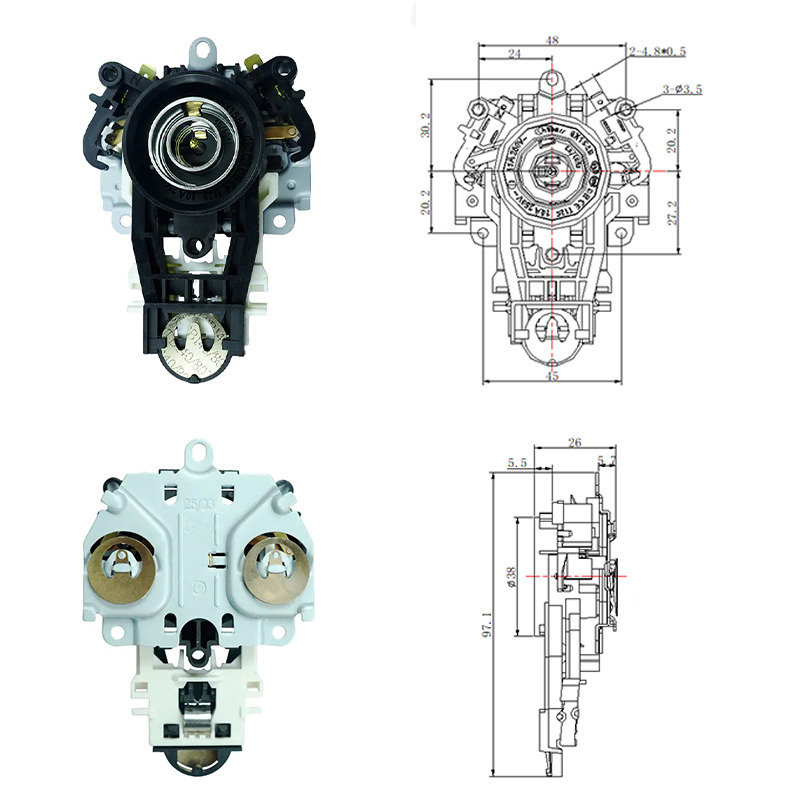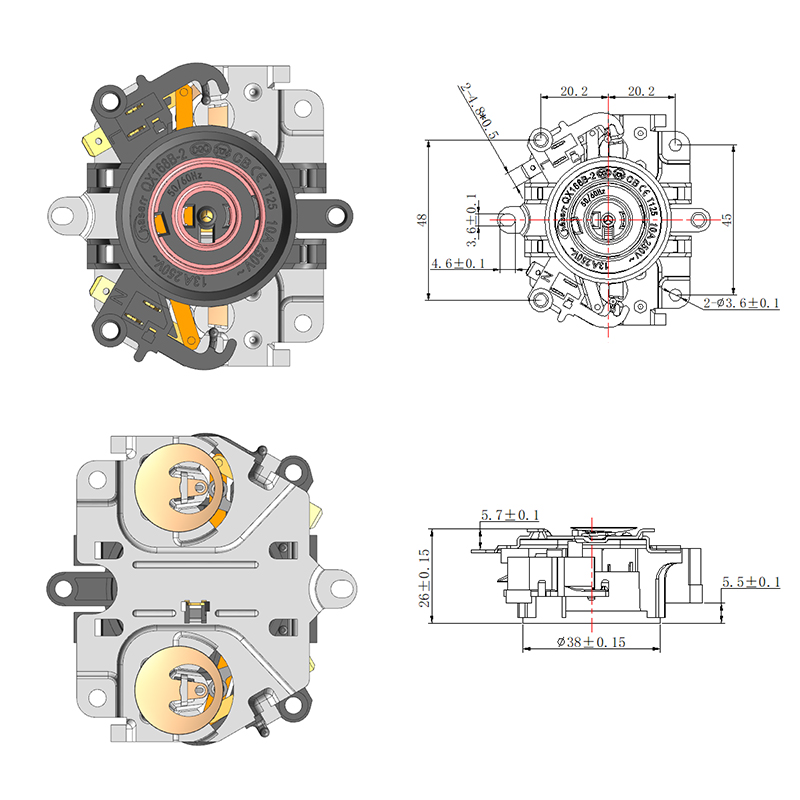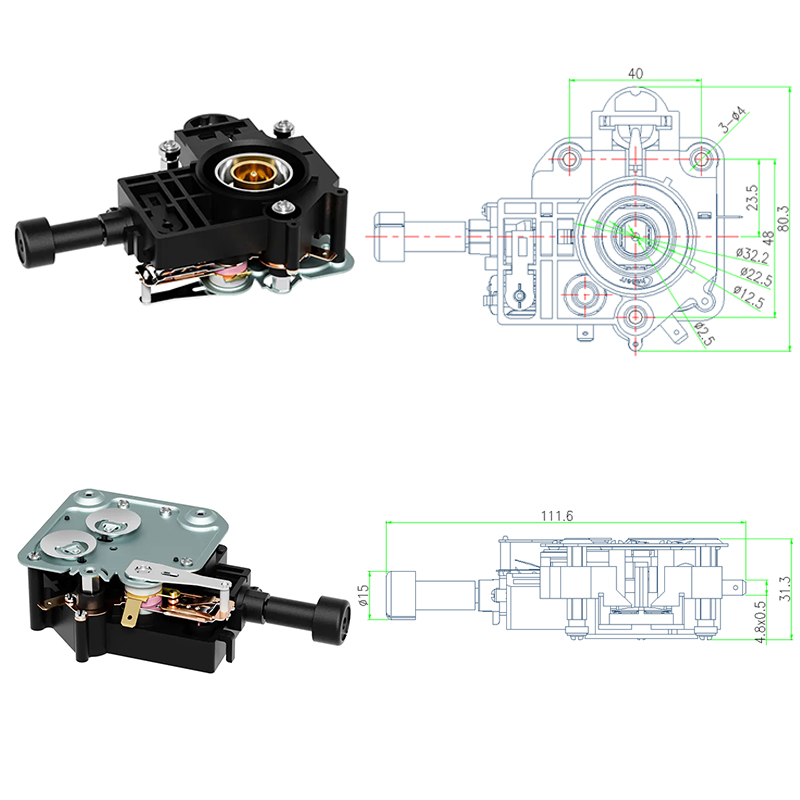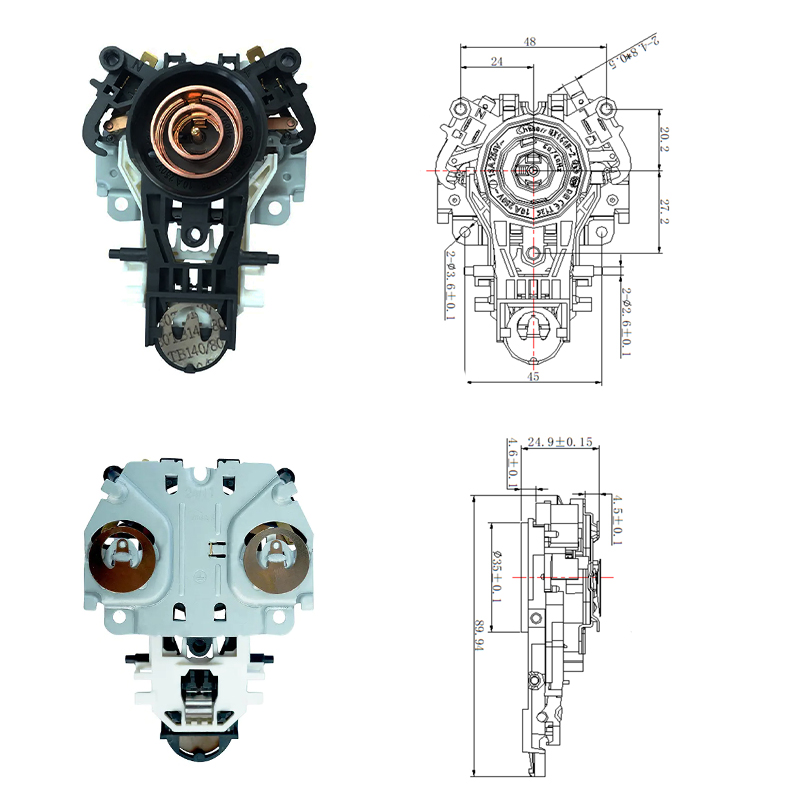Core Working Principle of Anti-Drying Kettle Coupler
In the design of modern electric kettles, safety and efficiency are key priorities. Among the critical safety components is the Anti-Drying Kettle Coupler, a device developed to prevent overheating and potential damage when the kettle operates without sufficient water. This technology integrates thermal sensing, material engineering, and intelligent circuit control to ensure the appliance automatically stops heating under dry or near-dry conditions. Understanding its working principle provides valuable insight into how manufacturers enhance user safety and extend the lifespan of electric kettles.

Fundamental Structure and Components
The anti-drying coupler functions as a connection and sensing interface between the kettle body and its power base. It consists of conductive contacts, thermal-sensitive elements, and mechanical locking mechanisms housed within a heat-resistant enclosure. When the kettle is placed on the base, the coupler establishes electrical contact to power the heating element. Simultaneously, its built-in temperature sensor continuously monitors the base plate’s thermal condition. The combination of electrical and thermal functions allows it to detect abnormal temperature rises that occur when water is insufficient or absent.
Thermal Sensing and Automatic Cut-Off Mechanism
At the core of the anti-drying principle lies the thermal sensing technology. When the kettle contains water, the heating element’s energy is absorbed and distributed evenly through the liquid, keeping the base temperature stable. However, when water levels drop too low or completely evaporate, the heat has nowhere to dissipate and quickly accumulates near the base. The temperature sensor in the coupler identifies this rapid rise and immediately triggers the automatic cut-off circuit. This disconnection halts the power supply to the heating element, preventing further temperature increase and eliminating the risk of component damage, melting, or fire hazards.
Material Engineering and Heat Resistance
The success of the anti-drying system also depends on the materials used in the coupler. High-temperature-resistant polymers, brass connectors, and thermally stable alloys are typically employed to maintain conductivity and structural integrity during heating cycles. The thermal-sensitive components are designed to respond precisely to specific temperature thresholds, ensuring the kettle shuts off at the right moment. This combination of mechanical precision and material reliability enables the coupler to function repeatedly without degradation, even after hundreds of heating operations.
Integration with Intelligent Control Systems
Modern kettle designs increasingly combine the anti-drying coupler with microcontroller-based systems that provide enhanced safety logic. These systems record temperature fluctuations, detect unusual resistance patterns, and communicate with other components such as indicator lights or smart thermostats. When a potential dry-boil condition is detected, the control system confirms the sensor signal before executing shutdown, avoiding false triggers while maintaining rapid response. This intelligent integration ensures both user safety and convenience by allowing the kettle to restart only when safe operating conditions are restored.
The anti-drying protection mechanism in electric kettles operates through a carefully coordinated process of thermal detection, automatic circuit interruption, and durable material construction. The Anti-Drying Kettle Coupler plays a central role in this system, serving as both a connector and a safety sensor. Its precise heat monitoring and rapid response capabilities safeguard the appliance against overheating, ensuring long-term durability and user confidence. By combining engineering precision with smart safety logic, this technology has become a standard feature in high-quality electric kettles, representing the ongoing advancement of household appliance safety design.

 English
English  中文简体
中文简体  Español
Español 













